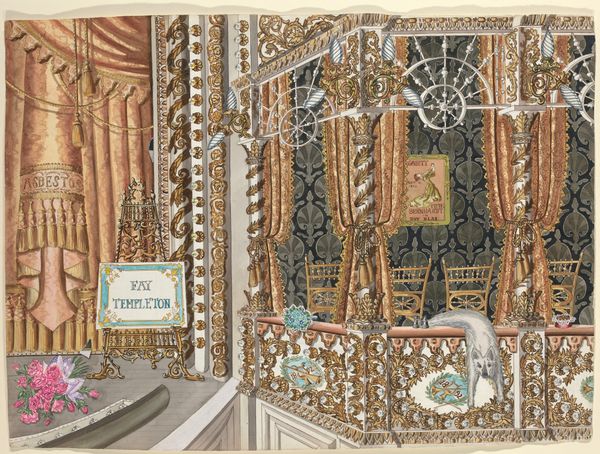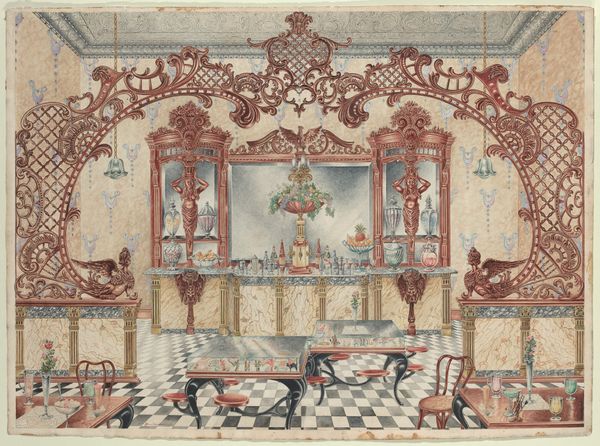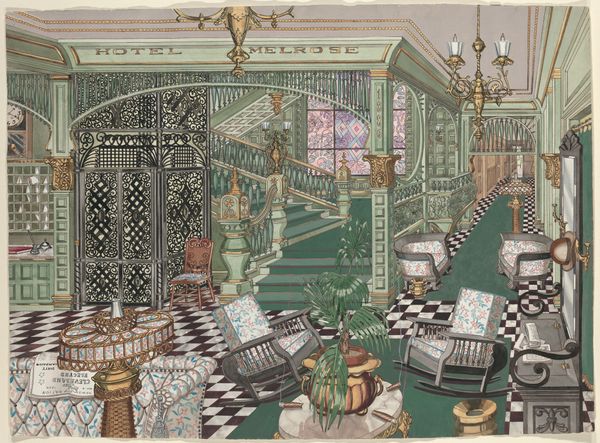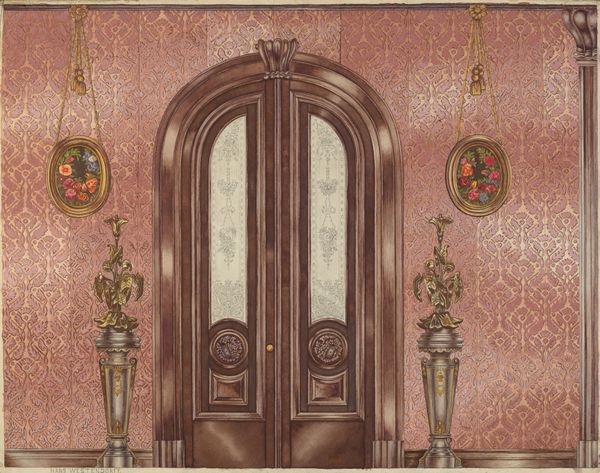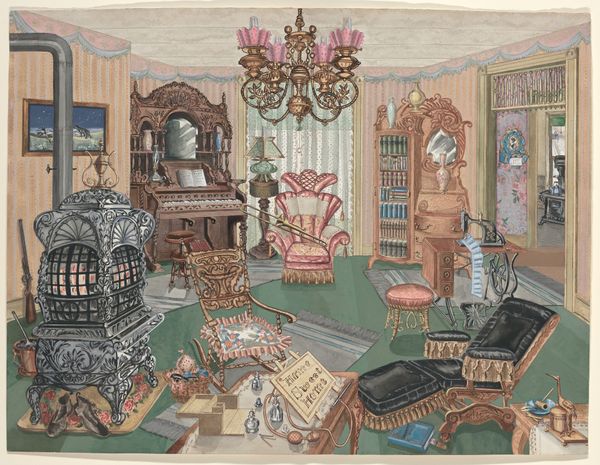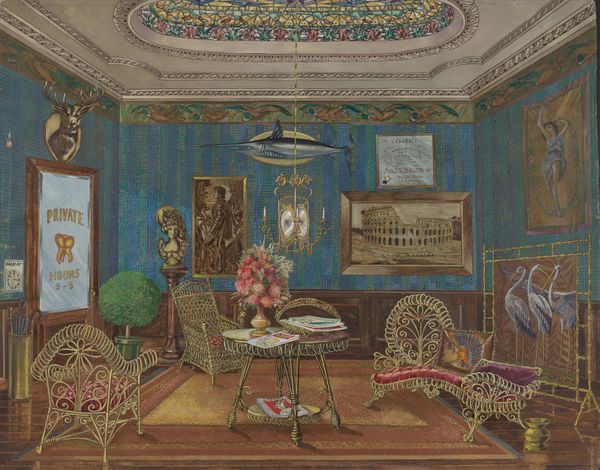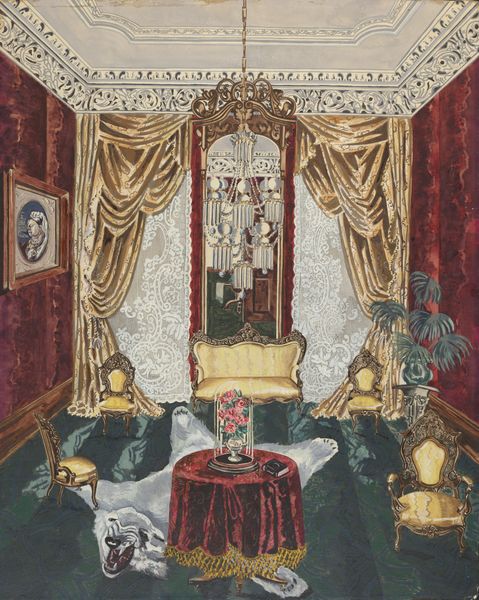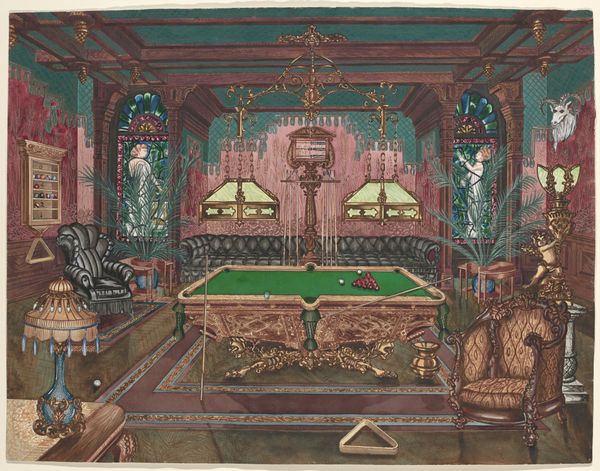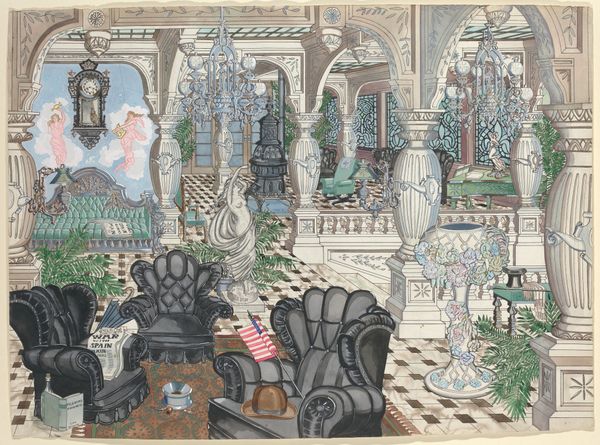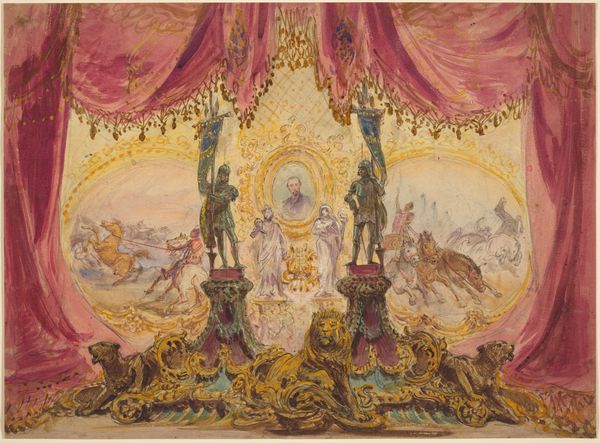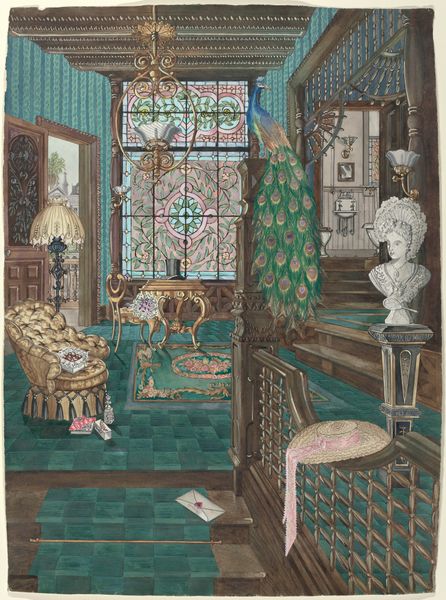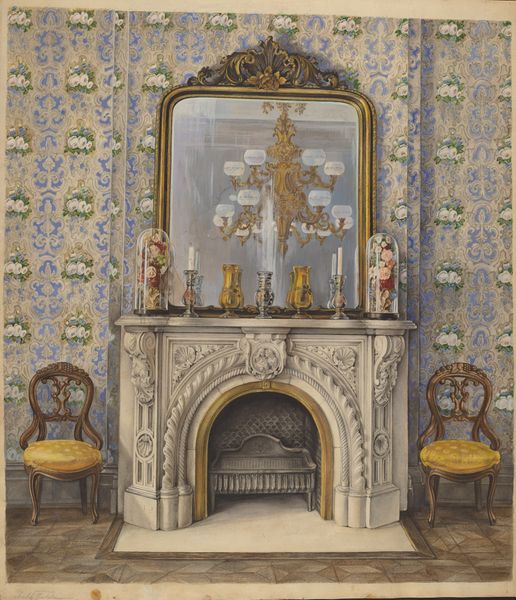
drawing, coloured-pencil, painting, watercolor
#
drawing
#
coloured-pencil
#
painting
#
caricature
#
watercolor
#
coloured pencil
#
cityscape
#
genre-painting
Dimensions: overall: 57 x 78.1 cm (22 7/16 x 30 3/4 in.)
Copyright: National Gallery of Art: CC0 1.0
Editor: So, this piece is called "Theatre Lobby," a watercolor and colored pencil drawing by Perkins Harnly, likely created between 1935 and 1942. It strikes me as whimsical, almost dreamlike. What’s your take? Curator: This piece is really fascinating when we consider the social and institutional forces at play during its creation. Harnly, like many artists during the Great Depression, worked with the WPA's Federal Art Project. How do you think this context shapes what we're seeing? Editor: Hmm, it's hard to directly connect it to the Depression. It feels so theatrical, removed from reality, almost… decadent? Curator: Precisely. But consider the role of theatre itself during that period – as an escape, as entertainment for the masses. And think about the artist: What is Harnly, as an artist supported by the government, suggesting through this closed, almost stage-managed space? Are these failed theatres? There are tickets on the ground and nobody present. It makes us consider not just entertainment but its distribution and how the WPA might think of this type of entertainment. Editor: That’s an interesting point. It does seem deliberately staged. I hadn't considered that "escape" could be seen from that perspective, though: this strange in-between stage. Are those references to actual shows that played at those venues? Is there some hidden commentary within that? Curator: The references would point to a contemporary performance, very likely. But who goes there? Or why is there trash on the floor, seemingly days old? So many unanswered questions… I appreciate you flagging it as "dreamlike". I hadn't thought about that specific way before but now I can't get it out of my head! It points to an "institutional dream state," if I dare call it that. Editor: I'm glad I could offer a different perspective! It is useful to note how the history informs these sorts of images as something other than surface level decorative or representational illustration. It offers another context for the image.
Comments
No comments
Be the first to comment and join the conversation on the ultimate creative platform.
